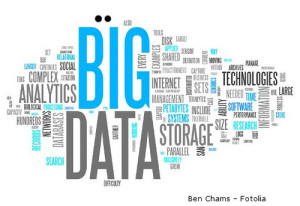
We already know that big data has been integrated across many, if not most, business industries, particularly in the finance and tech spaces. But what is really interesting is its new integration into pro sports. Pro teams today use analytics to determine optimum game length, predictive analytics to anticipate plays, and data mining to determine ways to optimize concession stand and ticket sales, and to ensure optimal staffing numbers are in place on game day.
Now, high school and college sports are closing in on their professional counterparts and becoming more technology and data savvy. Advances in video technology make analytics more affordable and more widely available to non-pro teams. Everything from HD cameras, to real-time video technology, to sensors, to wearables can record multiple aspects of a player’s performance, and this data is expected to get even more accurate in the future.
As the pros already know, data analytics can, through statistical processes such as predictive analytics and game theory, provide coaches and players with a wealth of previously unknown information regarding individual and team performance. Not surprisingly, this is something we spend a lot of time thinking about! Here are some of the areas we think big data can play a notable role in high school sports:
Peak [Optimizing] Performance.
Two of the biggest challenges coaches face are: 1) Keeping their athletes healthy and 2) Making sure athletes can perform at their peak on game day. Recent advances in technology and sports science are allowing teams to track athletes’ workload on a daily basis. Special data analytics tool then help manage athletes’ training so that they will be at their best for the big game.
For years, Olympic level athletes have kept detailed training logs tracking things like sleep, diet, stress, as well as training activities. This helps them stay healthy and be at their best for the big events. Now, coaches at the high school level are beginning to use technology in the same way.
Measuring speed.
When it comes to conditioning, running, speed, and acceleration of players, data gives coaches the ability to assess and analyze how a player performs against the team average, as well as how he or she might perform against competitors. This information can be extremely valuable to a coaching staff and provide a road map for areas of improvement.
Tracking vitals.
Big data (and wearables) can play a big role for a coaching staff. Tracking heart rate and vitals can not only keep players safe it can give insights into other factors that impact performance as well. For instance, if a player’s heart rate is much faster during a game than in training, or if he or she appears to be tiring rapidly, this could suggest that nerves are having an impact on performance. Technology allows constant monitoring, even the assessment of hydration levels, all of which adds up to safer players, better performance, and happier coaching staffs.
Measuring player impact.
The ability to measure player impact is helpful to both coaches and their recruiting staff. By breaking down specific player stats in relation to the games in which they play, it’s possible to quantify the impact certain players have on the game. Coaches such as the Oakland A’s Billy Beane and the Houston Rockets Daryl Morey have both used big data to their strategic advantage—recognizing and, in some cases even poaching undervalued players in their respective leagues. The ability to do this at a high school sports level could have a big impact on overall success and establishment of a competitive advantage.
College recruitment.
High school players are obviously interested in being recruited by colleges. But, in some instances, it can be difficult to attract the attention of high profile scouts, especially if your team is relatively unknown. Big data can play a role in awareness here and, with the proliferation of the Web, it could be fairly easy for impressive stats to turn heads and get some lesser known players a foot in the door with important scouts.
As technology continues its inevitable march forward, it creates exciting opportunities for coaches and athletes alike. Equally as important, it can level the playing field for those smart enough to integrate tech into their operations at an early stage. Whether it’s HD cameras, real-time video capabilities and use of video as a coaching tool, or the adoption of wearable technology, the data available as a result will provide new insights into our most beloved sports and undoubtedly create some great opportunities for talented players and teams as a result.
Photo Credit: Jim Kaskade via Compfight cc

